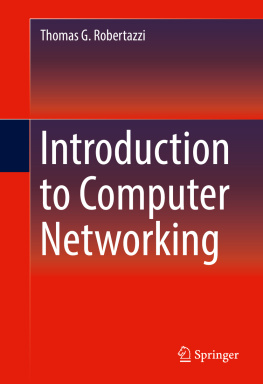In this world of today, where nothing is possible without the touch of technology in it, computer networking is also such a thing without which setting up an organization or business cannot be imagined at all. It helps in connecting various related devices to the endpoints with the help of various networking systems. Networking serves a very essential function for all the service providers, consumers and businesses all over the world for the purpose of sharing, using and offering various services and also for communicating at the same time. Networking comes with everything, from text messages to telephone calling and ending with video streaming and IoT. Network operation requires some serious skills that depend completely on the network complexity. For instance, in a very large enterprise, it might have millions of nodes along with several other requirements of network security like encryption, administrator functioning and many more.
On the other side, a normal person who uses internet and networking daily at his home can easily set up along with troubleshooting of various basic problems in the wireless network at their home. Both the examples given require the basics of networking to some extent.
Computer Network Basics
For understanding the prime functioning and components of networking, you need to learn about the basics first. A computer network is made up of various components that help in its overall functioning. Lets have a look at the basics of networking.
Networking and its types
Computer networking can be divided into two different types: wired network and wireless network. In the case of a wired network, it needs a physical medium for the purpose of transporting information between the nodes. For the purpose of digital communication in homes and in businesses, Ethernet cables are used for its durability and low cost as well. Optical fiber is also being now for data transportation to great distances and also at a much faster speed. However, whenever it comes to costing, Ethernet cables are much more cheaper than optical fibers.
In wireless networking, the radio waves are used for transporting data around the air in which the devices in the network are connected with each other without any form of cables in between. WLAN or wireless LAN is the most widely used and well-known version which is used for wireless networking. There are also several alternatives in the market today such as satellite, Bluetooth, microwave, cellular any many more.
It has been found that when it comes to networking, wired networking provides better speed, security along with reliability when it is compared with wireless form of networking. However, wireless networking provides much more mobility, scalability and flexibility that wired networking.
Wired and wireless networking is classified according to the networking physical layer. However, networking can also be differentiated in accordance with the design and built of the network, approaches of encompassing like SDN or overlay network. It can also be classified according to the scale, environment like campus, LAN, WAN, storage area network, data center network and many more.
Types of networking systems
There are two types of networking system: open and closed. In an open system, the system is connected with the network and is also ready for communication. However, in the case of a closed system, the system is not linked with the network and it is not possible to connect with the same.
Networking components
Computer networking comes with the requirement of the infrastructure of physical network. It includes various components such as routers, switches, access points along with the basic firmware which will help in operating the other components. When it comes to the other components, it includes the necessary software for the purpose of monitoring, securing and managing the network. All forms of networking rely largely on the standards of protocols for performing uniformly various discrete jobs or for communicating with various types of data. Protocol is nothing but a set of algorithms or rules which helps in defining the various ways in which two different entities communicate with each other across a network. There are various types of protocols that can be found within a network such as IP, ARP, DHCP, TCP, FTP and many more.
VoIP or voice over IP is used for the transportation of IP telephonic traffic to the endpoint which also supports the protocol. TCP/IP is known as the internet protocol suite which is responsible for data transportation over a network based on IP.
An IP address is the logical address which acts as the network address for the systems in a network. It helps in creating a unique identification for all the devices across the network. The IP addresses are in 32 bits. IANA or Internet Assigned Numbers Authority assigns a unique IPV4 for each and every system or device in a network.








